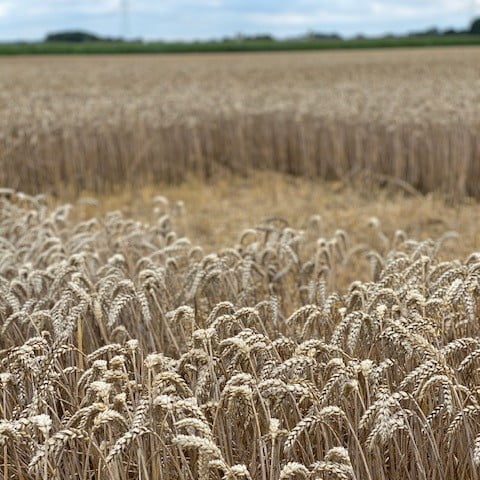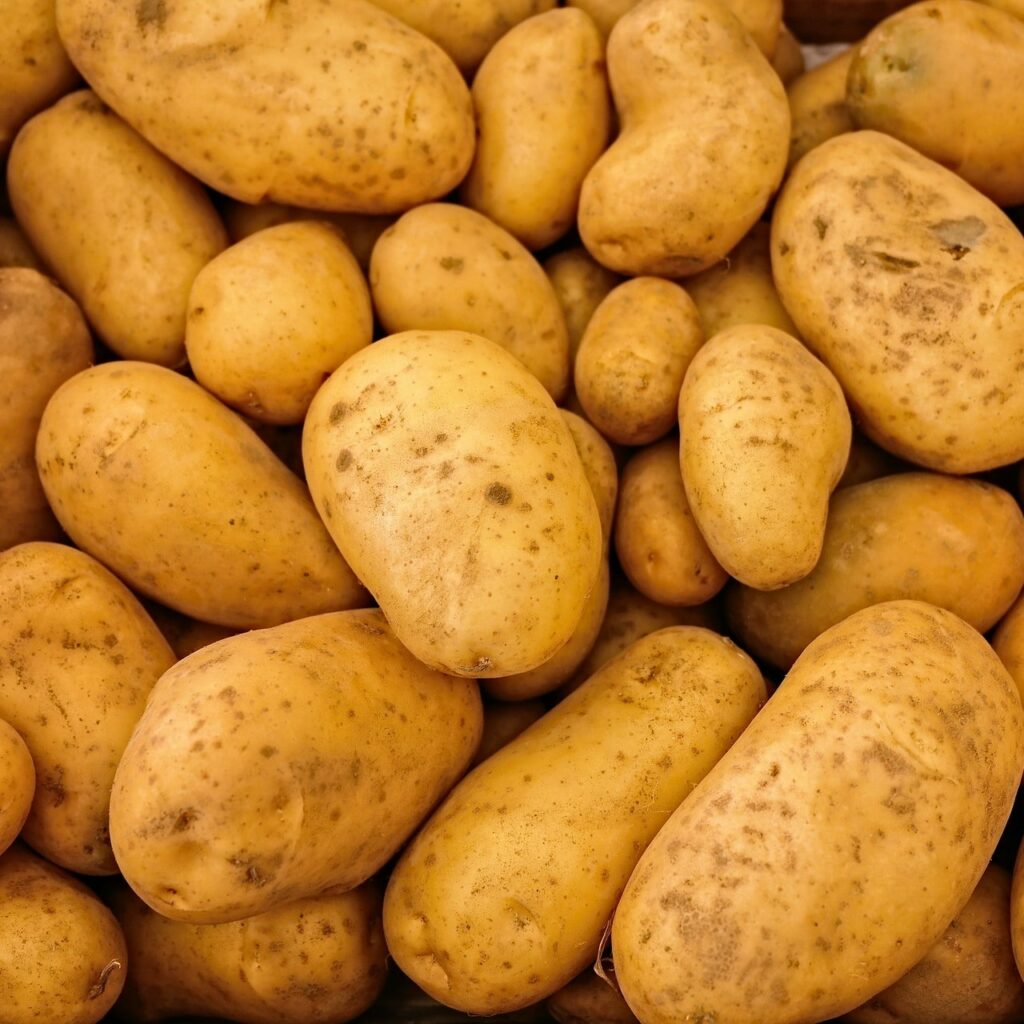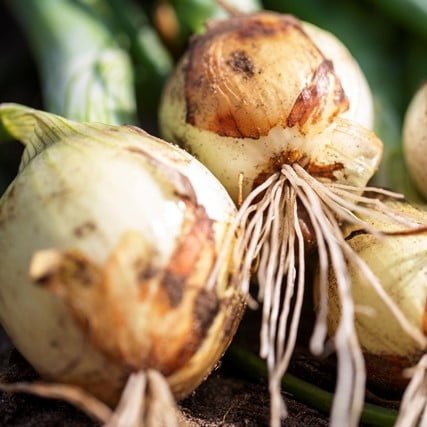
APPLICATION BIOSTIMULANT ‘BENESTIM RECOVERY’ ON SOW ONIONS
The agricultural sector is facing challenges to feed the growing global population. Efficiency of resources has to be increased. Although the use of pesticides and fertilizers play a crucial role in agriculture the sustainability in this field has to be increased. A significant reduction of synthetic agrochemical like pesticides and fertilizers is a way of reaching this. A promising and environmental friendly way of doing this is the use of biostimulants to overcome stress and to enhance plant growth, flowering, nutrient efficiency, fruit set and crop productivity. Last season we carried out a trial of biostimulant on sow onions. The results are surprising.
Trial methods of biostimulant
In this trial a biostimulant ‘BeneSTIM Recovery’ was tested on sow onions. This product was tested with good results on other agriculture crops like winter wheat, corn and soya. The trial was carried out on the field of Gerrits and Jilisen in Gassel, the Netherlands. The trial field was very sandy and therefor very sensitive to drought. Spraying was done with 300 litre per hectare with an automatic sprayer on GPS.

Applications of biostimulant:
27 June – 1,5 Litre
2 July – 1,5 Litre
10 July – 1,5 Litre
24 July – 1,2 Litre
31 July – 1,2 Litre
7 August – 1,2 Litre
14 August – 1,2 Litre
24 August – 1,2 Litre
Total – 10,5 Litre

The applications of biostimulant were combined with the regular spraying turns of fungicide or organic fertilizer treatments.

Figure 1 gives an overview of the treatments. On the onion field three races were present. Promotion and Nation are varieties of Syngenta and Vento is a variety of Hazera Seeds.
Heat and dryness stress
During the summer of 2020 a number of heat waves were present. The amount of rainfall in a lot of areas in the Netherlands was very low. Especially the months may, June and august were very dry. Figure rainfall the Netherlands. The current rainfall shortage is above 350 mm.

On Wednesday 16th of September the sow onions on the trial field of the biostimulant BeneSTIM Recovery were harvested. After harvesting, the sow onions were left on the field for 6 days. In this way the onion pipes or the foliage are being dried in. This makes the shelf life a lot longer. The weather in general during the harvest and the drying was good and dry. No rainfall observed during the drying period. This is a general advantage for the quality and the shelf life of the sow onions.
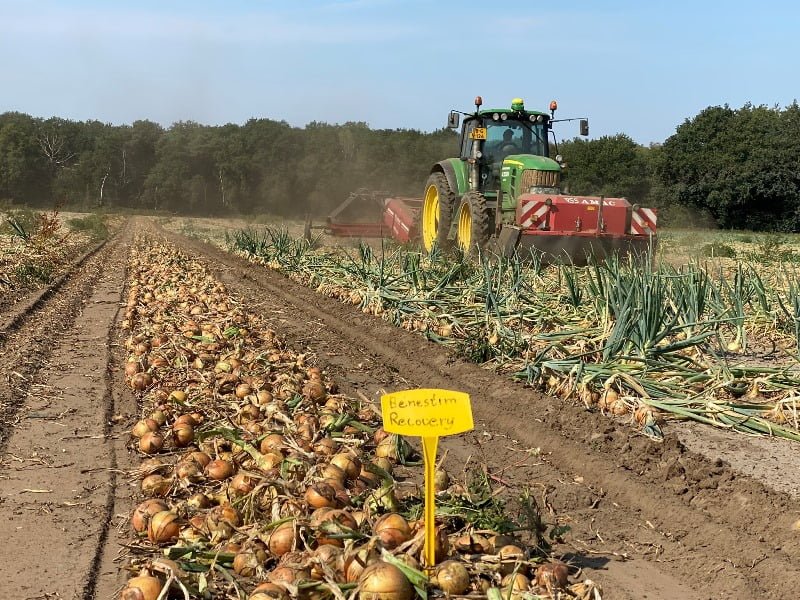
Measurements of the sow unions
Measurements were done on the variety Promotion and Nation. From 10 linear meters the yield in kg was measured. 89 cm holds for 2 m2. This means that 22,5 m2 per plot was measured from the treated and the untreated area. The first plot of promotion was excluded because there was to much foliage present on the untreated area. This was at first removed but the amount of onions per m2 differed to much to use these results. Another plot was measured to have a more safe set of data and a more equal amount of sow onions in the plots.
The size of the plots were chosen to have data a set that was big enough to have trustworthy result that are for the size statistically justified. Also the plots were chosen to compare three area’s in the field that differed in height.
Trial results
The difference in treated area at the Promotion plots was on average 6,2% between the untreated and the treated area. It seems the application of the biostimulant helped the plants to cope better with the abiotic stress during drought.
The difference in treated area at the Nation plots was on average 9,4% between untreated and the treated area. These provisional results confirm the positive effect with the treatment of the BeneSTIM Recovery.
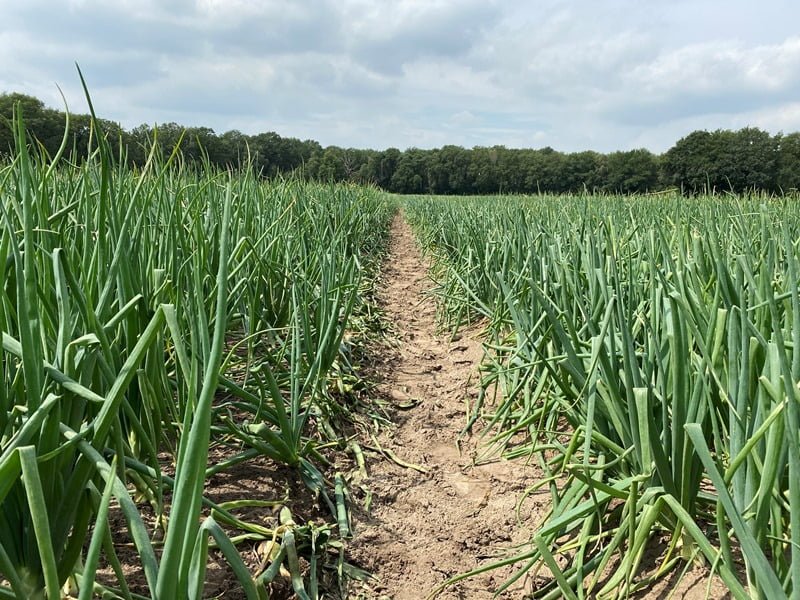
Discussion
More statistical results can be gained by using more and bigger plots to the future. For a first step in treatments with Biostimulants this gives a good indication of possibilities and the aspects that are necessary when applying the biostimulant BeneSTIM Recovery to overcome abiotic stress caused by drought and heat. Of course variation in the field can have an effect on the results and also measuring only the yield in kilogram per plot could be more specified to the future. Extra research could be done to have more information about the different sizes of the sow onions, the shelf life and also analysis on the dry matter and the uptake of certain feeding elements.
More result could be gained when combining the biostimulant with other liquid fertilizers. The mode of action of the biostimulant has a positive effect on the speed of uptake of nutrients but also on the translocation of elements.
Conclusion of the trial
This research in sow onions showed that the use of the biostimulant BeneSTIM Recovery could help certain crops in difficult periods to overcome stress and to reduce losses in yield. It is not always a matter of how much extra yield is being gained but in a lot of cases a matter of how less reduction in yield was measured. Although this is not the best year in terms of pricing for the onions we still managed to have a factor 8 on return on investment.
Acknowledgements
The research in this trial was carried out together with Gert Gerrits from Gerrits Gassel and with Geert Jilisen from Jilisen Agri. We are grateful for the time and effort they have spent to help us on this trial.
